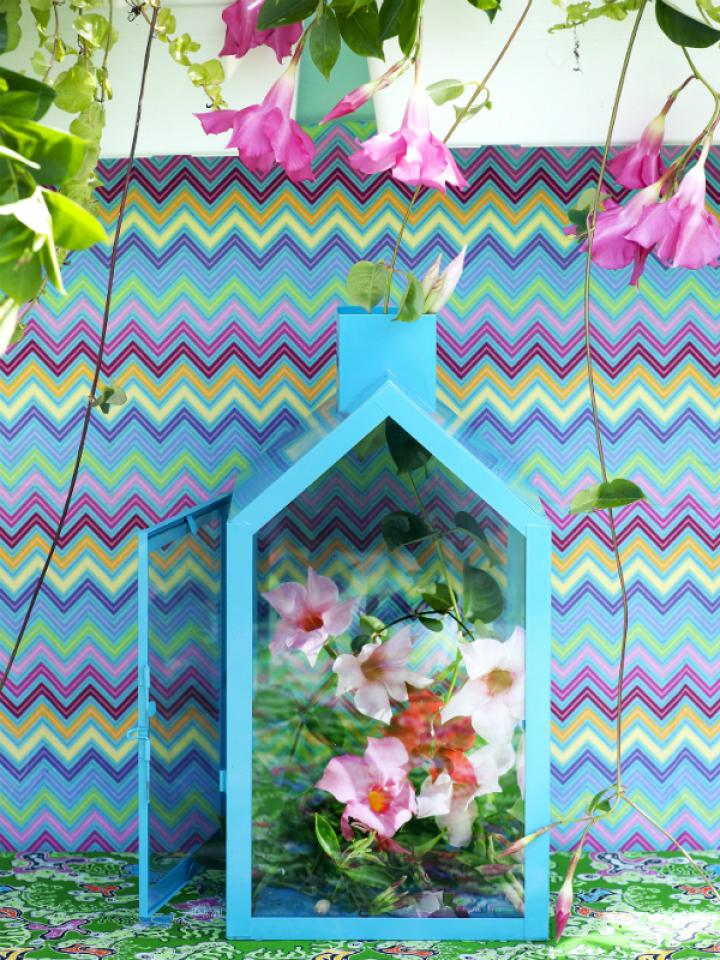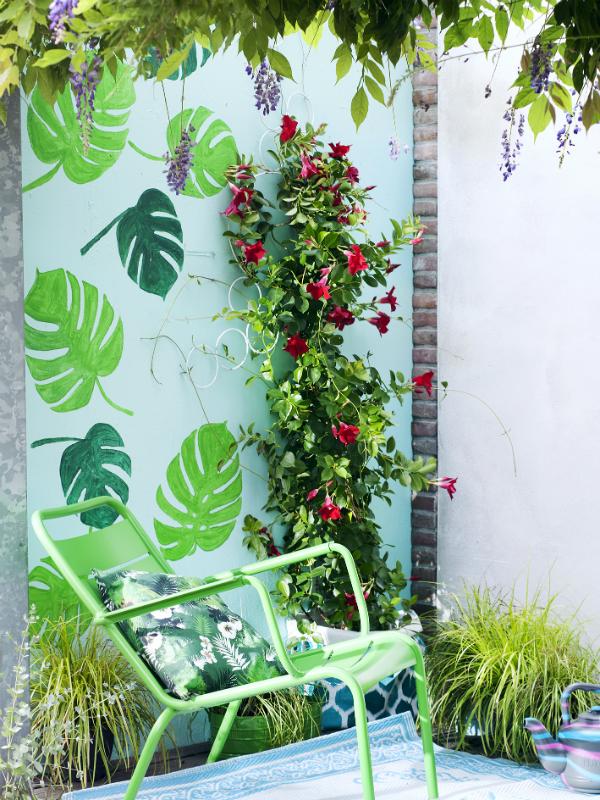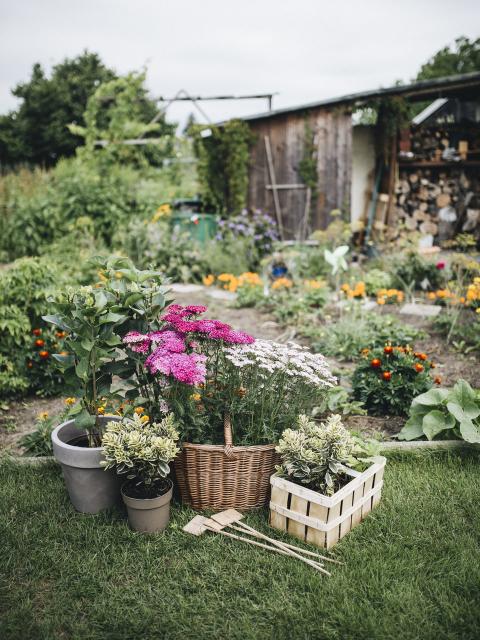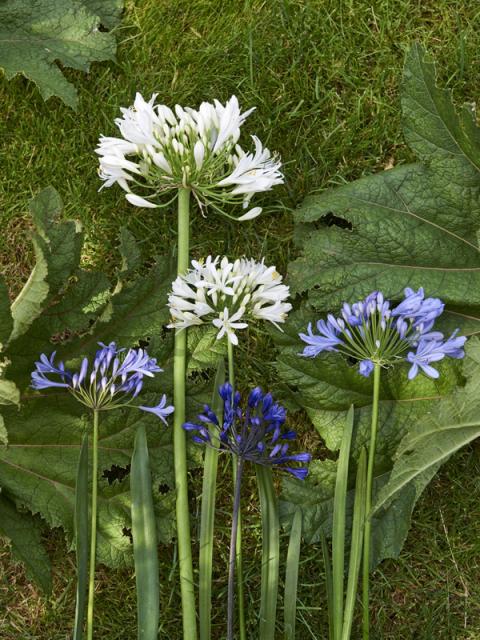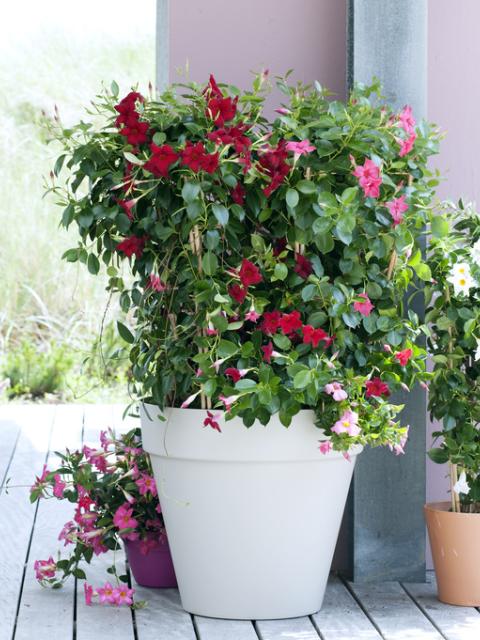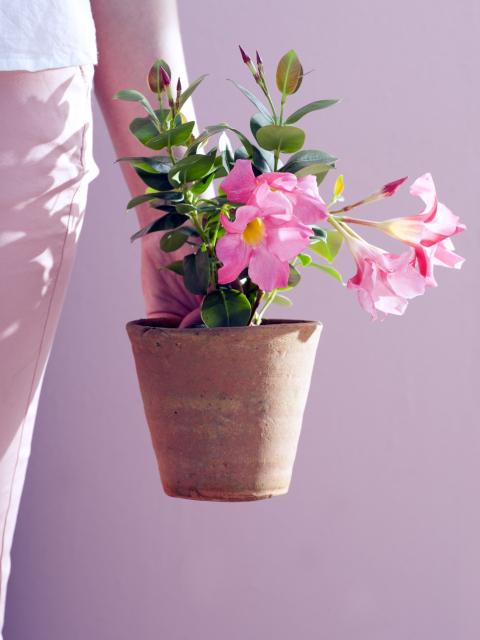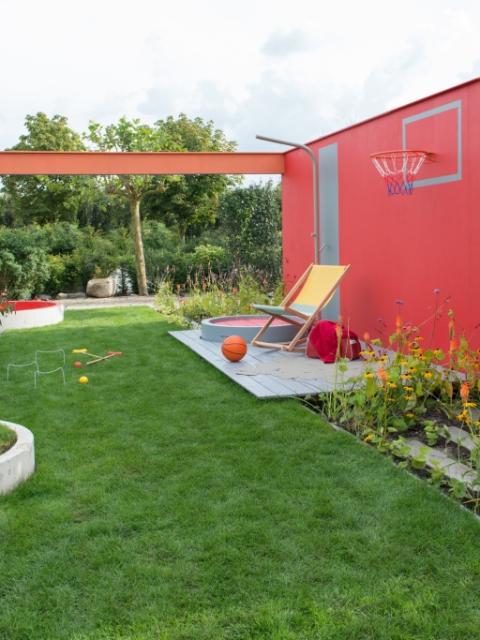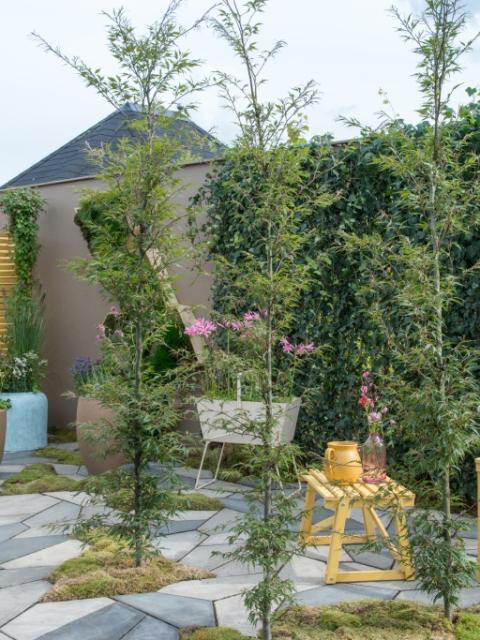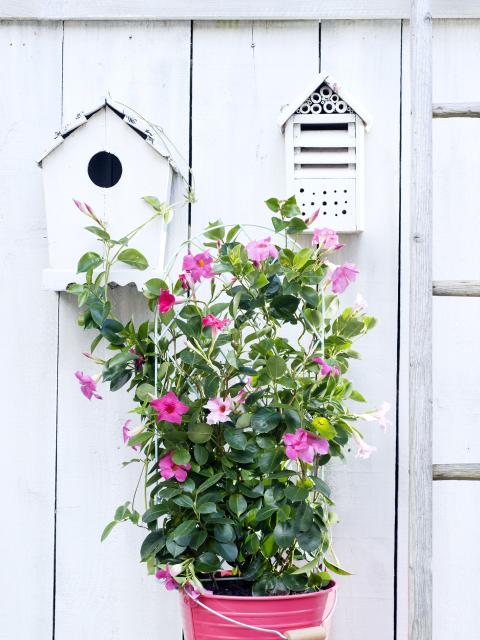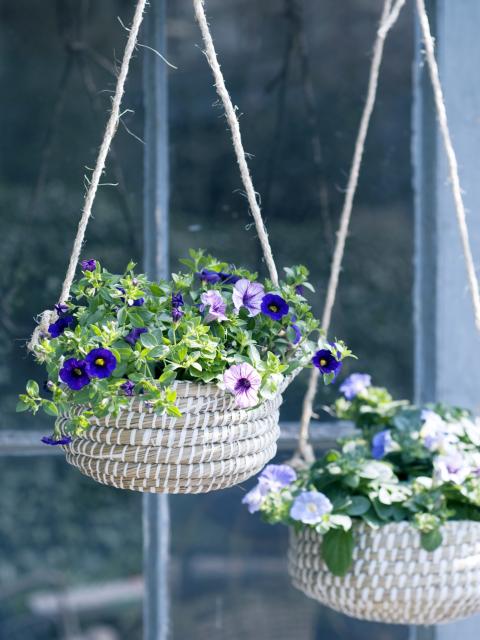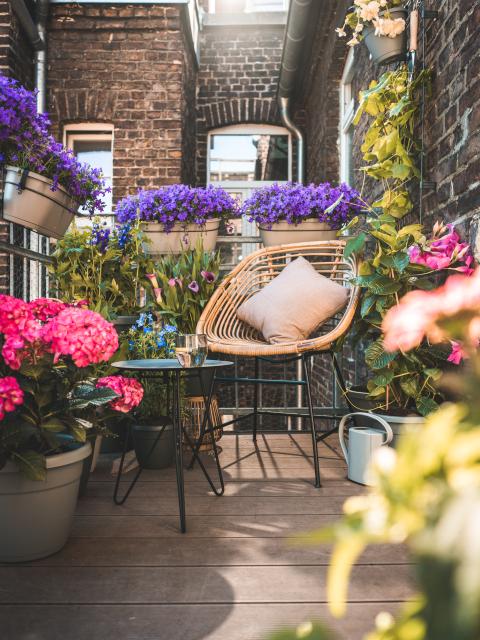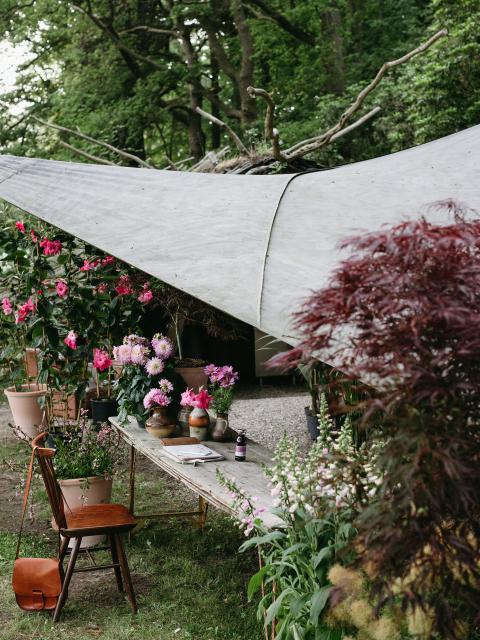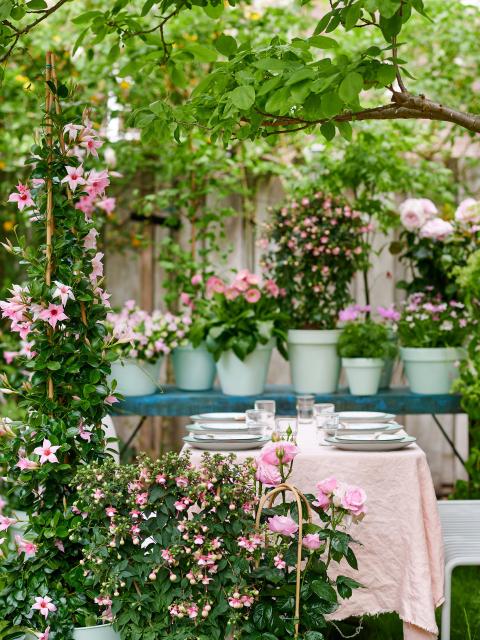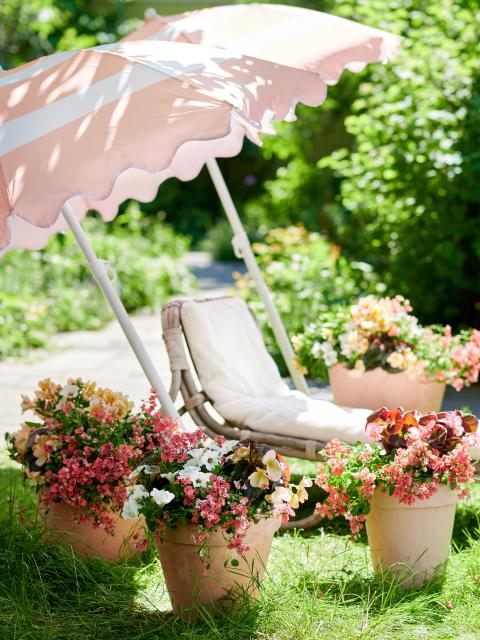Mandevilla likes to build excitement with small, tightly-closed buds. By the time they’re ready to open they’ve grown considerably, and a fantastic white, pink, yellow or red flower emerges with a wonderful fragrance. The flowers are pretty enduring and this climber keeps growing, both upwards and sideways. Given something to hold onto, the vines can clamber up a metre or more, making it a suitable plant for hanging baskets, both trailing over the edge and wrapping itself upward along the chain. A recent introduction are more compact Mandevillas that do not need a trellis.
Tough mountain climber
Mandevilla grows wild in Central and South America, usually at a considerable elevation. Most species originate from the Serra dos Órgãos region near Rio de Janeiro, a mountainous and forested area. The plant is a member of the periwinkle family, as can be seen from the structure of the flowers and the shiny dark green foliage. Both in the wild and in the garden, Mandevilla gives flowers from April until the autumn. The plant has been cultivated since midway through the 18th century, and its exotic appearance made it a must-have in Victorian greenhouses. You can get more from the plant by investing in a specimen which has already grown a bit, since they produce far more flowers. One trendy idea is to allow different colours to climb up something together.
Mandevilla trivia
-
The plant is named after the English diplomat and botanist Henry Mandeville.
-
Mandevilla's flowers can be between 5 and 12 cm across; the largest grow in Argentina.
-
To create a high-end jungalow effect combine Mandevilla with banana, hibiscus, plumbago and oleander.
